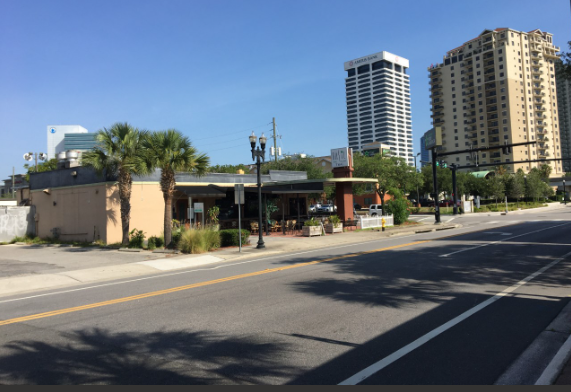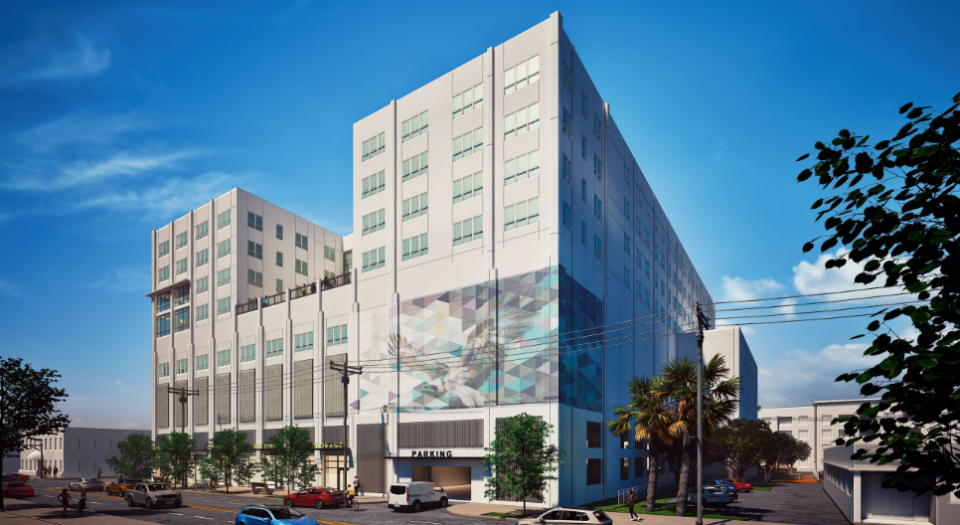Matt Carlucci: Storage units approval threatens community preservation; here's a solution

On April 23 the Jacksonville City Council decided to approve a rezoning that allowed storage units on the Southbank, thus breaking the downtown overlay.
Having been a part of the creation of the San Marco overlay and having contributed to the downtown overlay as well as various overlays across the great city of Jacksonville, I have seen firsthand just how hard our communities work to establish and protect these tools that we use to preserve our neighborhoods. The disappointment and frustration across the community has reached a breaking point, and I believe it’s crucial that we discuss why this recent decision not only “broke the overlay” but also threatens the tools we use to protect our vibrant communities across Jacksonville.
What is an overlay?
R. Brett James, director of Planning and Development for the city, says “Jacksonville’s overlay districts are a special type of zoning that allows protection of the unique character of selected districts. They are developed by stakeholders of the affected area, those that live or own property and businesses within the boundary of the proposed overlay district.”
Jacksonville boasts 11 such overlays, including Renew Arlington, Black Hammock, Mandarin, Mayport, and other overlays each designed to protect everything from environmental resources to historical integrity. These overlays start from the ground up, crafted by those who know their communities best, based off the tailored needs of each geographical area.
James continues, saying “Countless hours are invested by the public in creating the overlay district. Subsequent changes should be processed with similar rigor and public engagement. When this fails to happen, there is risk of not meeting the intent of those with much to lose from incompatible rezonings.”

Imagine driving through the historic districts of San Marco, Riverside/Avondale, or Springfield. There’s an unmistakable sense of place that makes each area distinct, its architecture, its streetscape, its culture. Overlays are the unsung heroes here, working behind the scenes to ensure that as our city grows, it retains these unique characteristics that make each of these eleven overlays feel distinct and appropriate.
Jacksonville is one of the fastest-growing cities in the nation and is projected to increase to 1.6 million in population in the next 50 years. Now is a critical time to ensure that city growth does not result in neighborhood deconstruction and identity crises.
Why the overlays exist
In drafting this editorial, I had a conversation with Lori Boyer, Downtown Investment Authority CEO and former District 5 council member. She made a comment about overlays that rang true: “Code restrictions applicable to Jacksonville in general, do not necessarily work downtown.”
The success of tailored zoning practices, like overlays, is evident in downtown, where the overlay prioritizes mixed-use development, density, and walkability, for example. Typically, these priorities are not expressed through our general zoning rules. The flexibility afforded by an overlay sparks economic development and reduces the need for cumbersome, parcel-by-parcel regulation.
Rather, overlays allow an individual parcel to reach its best and higher use while maintaining continuity in a defined geographic area. This greatly influenced San Marco’s past overlay efforts to address the inadequacies of a one-size-fits-all zoning approach which is especially detrimental in historic neighborhoods.
What I am proposing
The approval of a project that degrades the very essence of the downtown overlay is a stark reminder that our work is not done. Creating an overlay is a heavy lift for all involved and protecting it afterward is no easy task. This project, primarily intended to introduce self-storage, a use that is explicitly prohibited, flagrantly disregards the collective will of the community.
To avoid future overreaches and to better protect the integrity of all our overlays, I am introducing legislation that would require a two-thirds vote from the City Council, rather than a simple majority, for any rezoning that contradicts an established overlay. This change will ensure that significant community support and council consensus are necessary before any modifications to our carefully constructed overlays are made and will also fulfill the mayor’s desire to protect the citizen-inspired overlays.
Letters: Jacksonville getting in its own way again with Trio, other downtown development
These overlays are more than just effective zoning tools; they are manifestations of a community’s commitment to preserving unique characteristics and solving its specific challenges. If you support these efforts, please voice your opinion to your council members. Whether you live in one of our cherished historic neighborhoods, an area focused on environmental preservation, or any part of Jacksonville that values community input and integrity, this is about protecting what makes our city special.

Matt Carlucci, Jacksonville City Council, At-Large Group IV
This guest column is the opinion of the author and does not necessarily represent the views of the Times-Union. We welcome a diversity of opinions.
This article originally appeared on Florida Times-Union: Jacksonville councilman introduces law to address storage units vote

